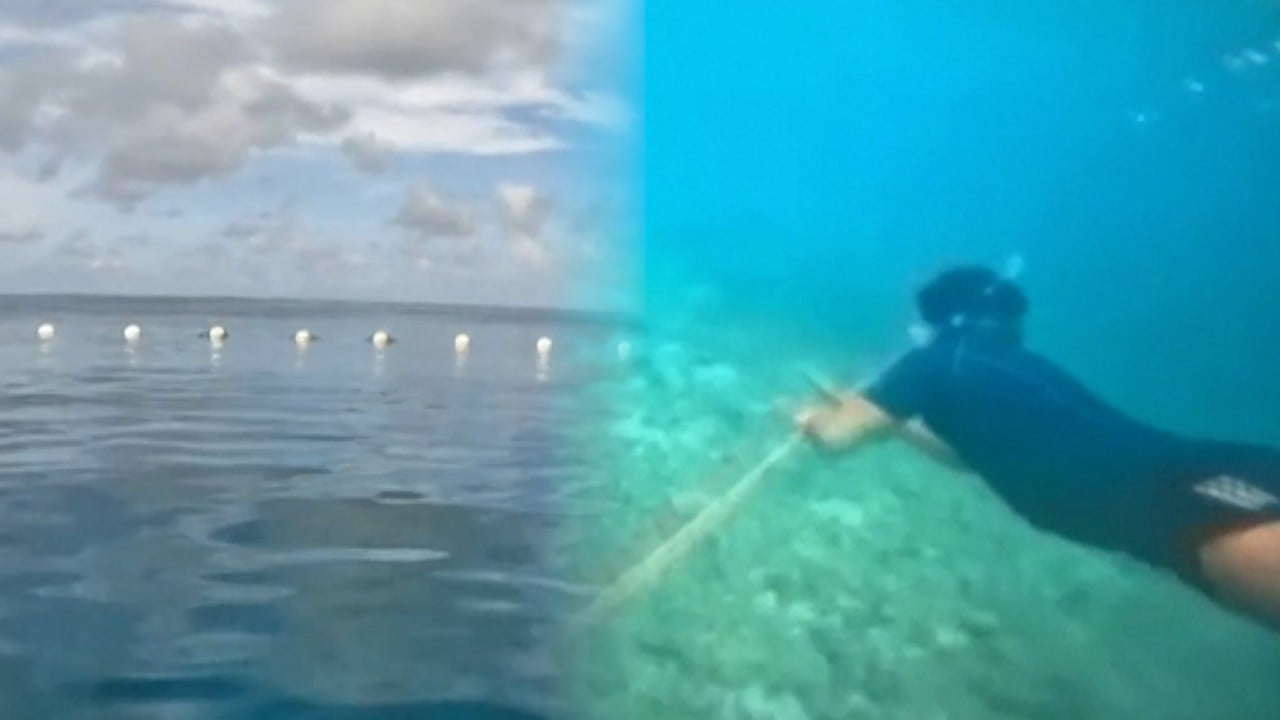
South China Sea: Beijing steps up military patrols as US and the Philippines conduct more drills in disputed waterway
- PLA Southern Theatre Command says it is sending navy and air force for routine patrols to monitor activities that ‘disrupt’ the region
- Chinese guided-missile destroyer and frigate shadow Philippine and American navies on Wednesday, Philippine media reports
The People’s Liberation Army’s Southern Theatre Command said it had sent its navy and air force to the South China Sea for routine patrols to monitor activities that “disrupt” the region.
“Troops in the theatre remain on high alert at all times, resolutely safeguarding national sovereignty, security and maritime rights and interests,” the command said on its WeChat account on Wednesday.
“Any military activities that disrupt and create hotspots in the South China Sea are fully under control.”
The patrols were intended to run on Wednesday and Thursday, the statement said.
They coincide with two days of joint US-Philippines military drills in the same area, the second exercises in two months as the two allies increase defence coordination in the region to jointly face China.
US Secretary of State Antony Blinken reaffirmed that commitment last week in a call with his Philippine counterpart Enrique Manalo.
The Philippine media outlet GMA Network said China had deployed a Type 052D guided-missile destroyer and a Type 054A frigate to shadow the Philippine and American navies on Wednesday, triggering warnings from one of the Philippine patrol boats.
The patrol boat had issued five messages but received no response from the Chinese side, the report said.
Will Manila’s plans to build in South China Sea escalate tensions with Beijing?
The Philippine military said it had deployed two helicopters and four ships while the US Indo-Pacific Command sent multiple combat aircraft and four vessels – including an aircraft carrier, a guided missile cruiser and two destroyers – from its Carrier Strike Group 1 for the joint mission.
The Armed Forces of the Philippines chief of staff General Romeo Brawner said the joint mission with the US marked a “significant leap” in their alliance and interoperability.
“Our alliance is stronger than ever, sending a message to the world. We are advancing a rules-based international order and a free and open Indo-Pacific region in the face of regional challenges,” Brawner said, according to a Philippine military statement.
China and the Philippines have been locked in growing tensions over disputed reefs in the South China Sea that are claimed by both sides.
The patrols came as the Philippines said it would send more floating assets to the Scarborough Shoal on Wednesday, days after China warned there would be a “resolute response” following a Philippine Congress funding allocation to build a “permanent structure” in the Second Thomas Shoal.
As it has tried to reinforce its sovereignty claim, Manila has increased its activity around the disputed reefs, including carrying out supply missions to its troops and fishermen regularly operating in the area.
These missions have often prompted blockades from China, including the use of water cannons and a floating barrier to deter them.
The obstructions resulted in two ship collisions last year. The two countries blamed each other for the incidents.

 - Kawala Xie.jpg?itok=NogZcyZ-&v=1661304068)

